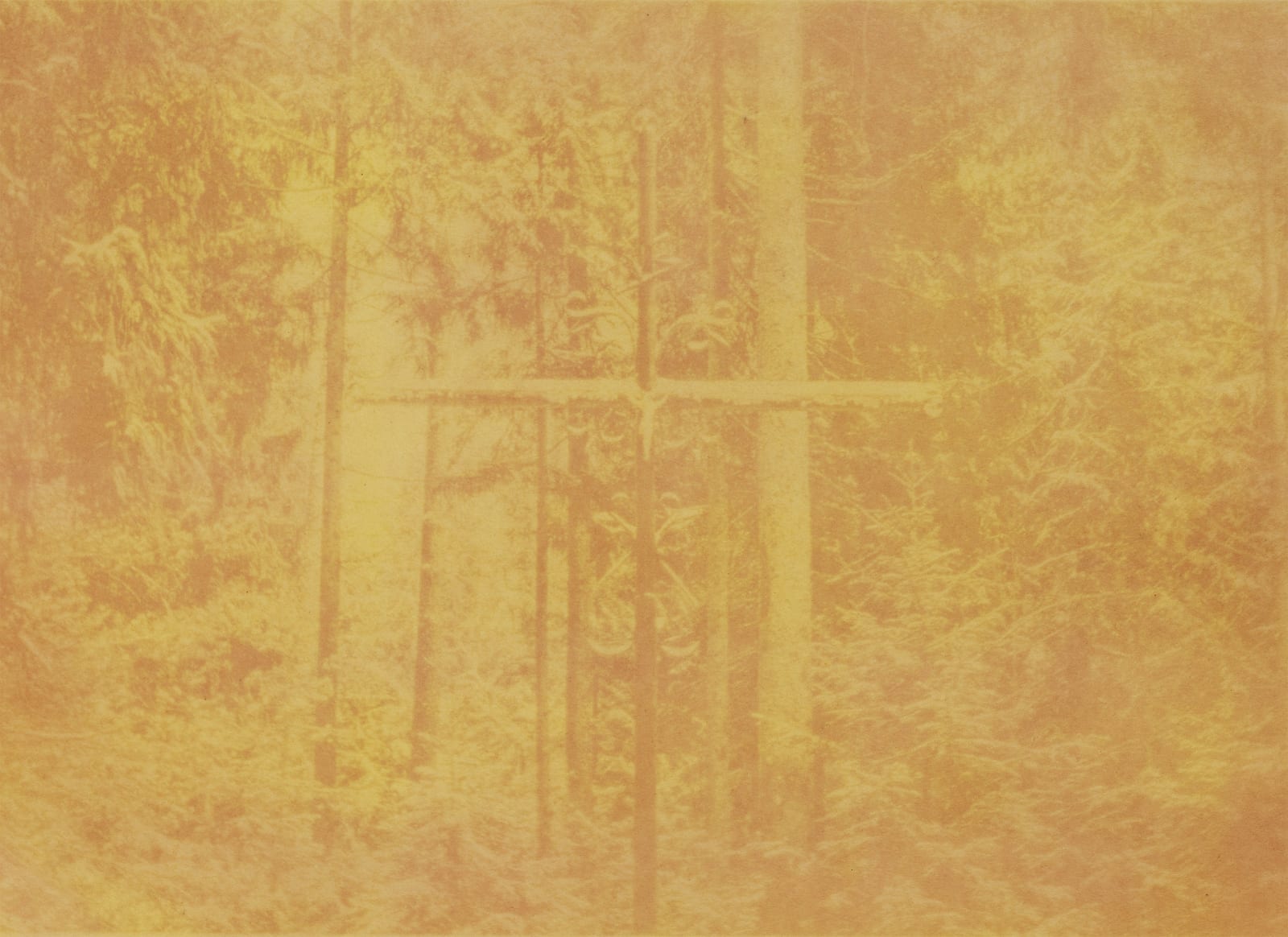Krista Svalbonas Lithuanian-American, b. 1977
Partisan 1, 2025
Archival inkjet print on Arches Aquarelles paper from original anthotype made using pigments from native plants
12 x 16 1/2 in
30.5 x 41.9 cm
30.5 x 41.9 cm
Edition of 1 plus 1 artist's proof
Artist Statement: 'Echoes of Resistance', explores the connection between the Baltic Partisan movement and the landscapes that served as sanctuary and symbols for its fighters. I am capturing not only...
Artist Statement:
"Echoes of Resistance", explores the connection between the Baltic Partisan movement and the landscapes that served as sanctuary and symbols for its fighters. I am capturing not only the physical beauty of these forests but also the emotional and historical significance they bear as sites of struggle and survival.
This series aims to shed light on the intricate stories of resistance, identity, and determination that define this crucial period in Eastern European history. Following World War II, the Baltic states—Lithuania, Latvia, and Estonia—endured Soviet occupation. The Partisan movement emerged in response, with individuals determined to fight for their nation's sovereignty and preserve their cultural and national identities.
I use native plant pigments, using the 19th-century photographic process of anthotypes, to infuse each photograph with a deeper narrative. The colors derived from local flora resonate with the environment, grounding the images in the very essence of the region's natural heritage. This choice reflects both the camouflage employed by Partisans and their intrinsic bond with the land, emphasizing how nature has been a silent witness to the fight for freedom.
Each image reflects the enduring strength and memory of the Partisan movement, serving as a testament to its legacy. Through the integration of photography and historical narrative, the work honors the individuals who fought in the shadows, drawing strength from the forests around them.
"Echoes of Resistance" transcends historical documentation, engaging the viewer in a dialogue with the past. In this collection, I want viewers to think about the lasting importance of place, the significance of resistance, and what endures in the aftermath of struggle. The forests, as symbols of resilience, continue to echo the stories of courage that inspire contemporary struggles for justice and freedom.
"Echoes of Resistance", explores the connection between the Baltic Partisan movement and the landscapes that served as sanctuary and symbols for its fighters. I am capturing not only the physical beauty of these forests but also the emotional and historical significance they bear as sites of struggle and survival.
This series aims to shed light on the intricate stories of resistance, identity, and determination that define this crucial period in Eastern European history. Following World War II, the Baltic states—Lithuania, Latvia, and Estonia—endured Soviet occupation. The Partisan movement emerged in response, with individuals determined to fight for their nation's sovereignty and preserve their cultural and national identities.
I use native plant pigments, using the 19th-century photographic process of anthotypes, to infuse each photograph with a deeper narrative. The colors derived from local flora resonate with the environment, grounding the images in the very essence of the region's natural heritage. This choice reflects both the camouflage employed by Partisans and their intrinsic bond with the land, emphasizing how nature has been a silent witness to the fight for freedom.
Each image reflects the enduring strength and memory of the Partisan movement, serving as a testament to its legacy. Through the integration of photography and historical narrative, the work honors the individuals who fought in the shadows, drawing strength from the forests around them.
"Echoes of Resistance" transcends historical documentation, engaging the viewer in a dialogue with the past. In this collection, I want viewers to think about the lasting importance of place, the significance of resistance, and what endures in the aftermath of struggle. The forests, as symbols of resilience, continue to echo the stories of courage that inspire contemporary struggles for justice and freedom.
1
of
8

